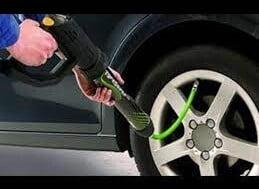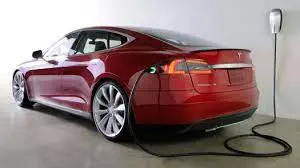all english artical in end
هل حان الوقت لشراء سيارة كهربائية ؟؟
يبدو السؤال الذي يشغل بال المستهلكين مع بدايات 2019 هو: هل حان الوقت بعد لاعتبار السيارات الكهربائية بديلاً عملياً لسيارات الاحتراق الداخلي؟ وتتفرع الأسئلة حول ما إذا كان شراء هذا النوع من السيارات له جدوى خلال العام الجديد، وما إذا كانت هذه السيارات يمكن الاعتماد عليها، خصوصاً في المسافة التي تقطعها قبل الحاجة إلى الشحن.
السيارات الكهربائية هي أحدث مرحلة تطور بعد السيارات الهايبرد والهايبرد بالشحن الخارجي وسيارات الدفع الهيدروجيني. وهي تعتمد على محرك كهربائي وبطاريات يعاد شحنها تدفع السيارات إلى مسافات تصل الآن إلى ما بين ١٨٠ إلى ٣٠٠ كم قبل الحاجة إلى إعادة الشحن.
وهناك بالفعل الكثير من السيارات العملية المتاحة فعلاً في أسواق 2019، والمزيد منها سوف يصل قريباً إلى أسواق المنطقة. ويمكن للمستهلك أن يشتري من بين نخبة سيارات كهربائية متاحة بالفعل مثل cheforlet وFord وvolkswagn وkia و Nessan، وقد تألقت الماركات الصينية في هذا المجال بلاء حسناً نظرا للتقدم التكنولوجي خاصة في البطاريات ومنها Chery و Baic وGeely وBYD صاحبة أكبر انتاج في العالم العام الحالي.
كما بدأت مجموعة جنرال موتورز في عام 2018 بيع سيارات شيفروليه «بولت» الكهربائية الصغيرة التي تستخدمها أيضا شرطة دبي وسلطات المطار. وتدخل في المنافسة شركات صينية كبيرة تعد العدة لدخول المنطقة هذا العام بسيارات كهربائية تستخدم بالفعل داخل الصين واثبتت قدرتها التي تتفوق من حيث المدى.
والبعض يرى إن تقنية السيارات الكهربائية لم تصل إلى درجة النضوج الذي يجعل قرار الشراء سهلا. والمستهلك ليس مستعداً بعد لتبني تقنيات جديدة غير معروفة بالإضافة الي المدى الذي تقطعه السيارات الكهربائية حيث يتأثر المدى بالكثير من العناصر مثل الحمولة وسرعة المرور وطبيعة الطرق من حيث المطالع والمهابط ودرجة الحرارة الخارجية. ويعتمد المدى كذلك على استخدام الأضواء الخارجية والتكييف وتشغيل أنظمة الترفيه الموسيقية وشحن الأجهزة المحمولة.
ولكن المؤشرات تدل علي وصول سيارات كهربائية بين عامي 2020 و2025 من عشرات الشركات تضاف إلى ما هو متاح في الأسواق بالفعل. وتدخل في السباق شركات معروفة مثل «مرسيدس بنز وبي إم دبليو واودي ونيسان وهيونداي وفولكسفاغن وتويوتا».
وهي تضاف إلى الخيارات المتاحة حاليا من سيارات «أي بيس» من جاغوار و«ليف» من نيسان و«أي 3» من بي إم دبليو وسيارات تيسلا. وفي عام 2019 تدخل إلى الأسواق سيارات مثل «كونا» الكهربائية من هيونداي و«إي نيرو» من كيا والجيل الجديد من نيسان «ليف»، بالإضافة إلى اودي «إي ترون» ومرسيدس «إي كيو سي».
معايير الاختيار
إلى جانب المعايير العامة من حيث اعتمادية السيارة ونسبة التقادم وسعر الشراء هناك مقياس آخر وهو تكلفة الاستعمال. ويأخذ هذا المعيار في الاعتبار مدى السيارة بالكيلومترات.
ويرى موقع تحليل القيادة الكهربائية «درايفنغ إلكتريك» أن معظم مستخدمي السيارات الكهربائية لا يقطعون أكثر من ١١٠ كم في الأسبوع وراء المقود مما يعني أنهم يستطيعون قيادة سياراتهم الكهربائية لمدة أسبوع كامل قبل الحاجة إلى إعادة الشحن.
وفي أوروبا أثبتت النرويج أن التحول نحو الدفع الكهربائي يمكن أن يحدث بسرعة. وتضع كل الدول الأوروبية أهداف التحول إلى الدفع الكهربائي ضمن مستقبل قيادة السيارات فيها، ولكنها تسير بسرعات متفاوتة نحو هذا الهدف. وتصل نسبة السيارات الكهربائية في النرويج إلى 20 في المائة من الإجمالي.
في ألمانيا وعدت المستشارة أنجيلا ميركل في عام 2010 بأن سياستها تهدف إلى إيجاد مليون سيارة كهربائية على الشوارع الألمانية بحلول عام 2020. ولكن تعداد هذه السيارات في العام الماضي كان لا يزيد على 100 ألف سيارة، بما في ذلك سيارات الهايبرد بشحن خارجي. وبالطبع سوف يكون من الصعب تحقيق هدف المليون سيارة كهربائية في موعده. وتوفر الحكومة الألمانية حوافز تصل إلى ألفي يورو لتشجيع المشترين على التحول إلى سيارات كهربائية.
وتتسابق بريطانيا وفرنسا وإسبانيا على تحفيز الانتقال السريع إلى الدفع الكهربائي بتحديد عام 2040 كنهاية لإنتاج سيارات بترولية جديدة. وتقدم هذه الدول الحوافز وتفرض المزيد من الضرائب على إفرازات العادم كما تبني محطات شحن كهربائي لاستكمال البنية التحتية.
– مزايا وعيوب السيارات الكهربائية
> من أهم مزايا السيارات الكهربائية أنها عالية الكفاءة وصامتة التشغيل وأرخص في التشغيل ونظيفة في الاستعمال ويمكن شحنها منزلياً، بالإضافة لعدم وجود زيوت أو سيور أو الصيانات التقليدية لسيارات الاحتراق الداخلي
> أما العيوب فتشمل ارتفاع أسعار الشراء وطول فترة الشحن وعدم وجود خيارات متعددة في الأسواق.
Is it time to buy an electric car??
The question on consumers’ minds at the beginning of 2019 seems to be: Is it time to consider electric cars a viable alternative to internal combustion cars? Questions arise about whether buying this type of car is feasible during the new year, and whether these cars are reliable, especially in the distance they travel before the need for shipment.
Electric cars are the latest stage of development after hybrid and hybrid cars with external charging and hydrogen propulsion cars. It relies on an electric motor and rechargeable batteries that propel cars over distances of now between 180 to 300 km before needing to be recharged.
There are already a lot of practical cars already available in the markets of 2019, and more of them will soon arrive in the markets of the region. The consumer can buy from among the elite electric cars already available, such as Chevorlet, Ford, Volkswagen, Kia and Nissan. Chinese brands have done well in this field due to technological progress, especially in batteries, including Chery, Baic, Geely and BYD, which has the largest production in the world this year.
In 2018, GM Group also began selling small electric Chevrolet “Bolt” cars, which are also used by Dubai police and airport authorities. And entering the competition are large Chinese companies that are preparing to enter the region this year with electric cars that are already used inside China and have proven their ability that outperforms in terms of range.
Some believe that the technology of electric cars has not reached the stage of maturity that makes the purchase decision easy. The consumer is not yet ready to adopt new and unknown technologies in addition to the range of electric cars, as the range is affected by many factors such as load, traffic speed and the nature of the roads in terms of heights, landings and outside temperature. The range also depends on the use of outdoor lights, air conditioning, the operation of music entertainment systems and the charging of mobile devices.
But indicators indicate the arrival of electric cars between 2020 and 2025 from dozens of companies, adding to what is already available in the market. Well-known companies such as Mercedes-Benz, BMW, Audi, Nissan, Hyundai, Volkswagen and Toyota have entered the race.
It is added to the options currently available from Jaguar i-Pace, Nissan LEAF, BMW i3 and Tesla cars. In 2019, cars such as Hyundai’s electric Kona, Kia’s e-Niro and the new generation of Nissan Leaf, as well as the Audi e-tron and Mercedes EQC, enter the market.
selection criteria
In addition to the general criteria in terms of vehicle reliability, obsolescence rate, and purchase price, there is another measure, which is the cost of use. This criterion takes into account the vehicle’s range in kilometers.
According to the electric driving analysis website, Driving Electric, most electric car users do not drive more than 110 km per week behind the wheel, which means they can drive their electric cars for an entire week before needing to recharge.
In Europe, Norway has demonstrated that a shift towards electric propulsion can happen quickly. All European countries put the goals of switching to electric drive within the future of driving their cars, but they are moving at varying speeds towards this goal. In Norway, electric cars account for 20 per cent of the total.
In Germany, Chancellor Angela Merkel promised in 2010 that her policy aims to have one million electric cars on German streets by 2020. But last year the number of such cars was no more than 100,000, including hybrids with external charging. Of course, it will be difficult to achieve the goal of one million electric cars on time. The German government provides incentives of up to 2,000 euros to encourage buyers to switch to electric cars.
Britain, France and Spain are racing to stimulate a rapid transition to electric propulsion by setting 2040 as the end of new petrol car production. These countries offer incentives, impose more taxes on exhaust emissions, and build electric charging stations to complement the infrastructure.
Advantages and disadvantages of electric cars
> One of the most important advantages of electric cars is that they are highly efficient, silent, cheaper to operate, clean to use, and can be charged at home, in addition to the absence of oils, belts or traditional maintenance for internal combustion cars.
> The disadvantages include the high purchase prices, the long shipping period, and the lack of multiple options in the market.
Electric cars are the latest stage of development after hybrid and hybrid cars with external charging and hydrogen propulsion cars. It relies on an electric motor and rechargeable batteries that propel cars over distances of now between 180 to 300 km before needing to be recharged.
There are already a lot of practical cars already available in the markets of 2019, and more of them will soon arrive in the markets of the region. The consumer can buy from among the elite electric cars already available, such as Chevorlet, Ford, Volkswagen, Kia and Nissan. Chinese brands have done well in this field due to technological progress, especially in batteries, including Chery, Baic, Geely and BYD, which has the largest production in the world this year.
In 2018, GM Group also began selling small electric Chevrolet “Bolt” cars, which are also used by Dubai police and airport authorities. And entering the competition are large Chinese companies that are preparing to enter the region this year with electric cars that are already used inside China and have proven their ability that outperforms in terms of range.
Some believe that the technology of electric cars has not reached the stage of maturity that makes the purchase decision easy. The consumer is not yet ready to adopt new and unknown technologies in addition to the range of electric cars, as the range is affected by many factors such as load, traffic speed and the nature of the roads in terms of heights, landings and outside temperature. The range also depends on the use of outdoor lights, air conditioning, the operation of music entertainment systems and the charging of mobile devices.
But indicators indicate the arrival of electric cars between 2020 and 2025 from dozens of companies, adding to what is already available in the market. Well-known companies such as Mercedes-Benz, BMW, Audi, Nissan, Hyundai, Volkswagen and Toyota have entered the race.
It is added to the options currently available from Jaguar i-Pace, Nissan LEAF, BMW i3 and Tesla cars. In 2019, cars such as Hyundai’s electric Kona, Kia’s e-Niro and the new generation of Nissan Leaf, as well as the Audi e-tron and Mercedes EQC, enter the market.
selection criteria
In addition to the general criteria in terms of vehicle reliability, obsolescence rate, and purchase price, there is another measure, which is the cost of use. This criterion takes into account the vehicle’s range in kilometers.
According to the electric driving analysis website, Driving Electric, most electric car users do not drive more than 110 km per week behind the wheel, which means they can drive their electric cars for an entire week before needing to recharge.
In Europe, Norway has demonstrated that a shift towards electric propulsion can happen quickly. All European countries put the goals of switching to electric drive within the future of driving their cars, but they are moving at varying speeds towards this goal. In Norway, electric cars account for 20 per cent of the total.
In Germany, Chancellor Angela Merkel promised in 2010 that her policy aims to have one million electric cars on German streets by 2020. But last year the number of such cars was no more than 100,000, including hybrids with external charging. Of course, it will be difficult to achieve the goal of one million electric cars on time. The German government provides incentives of up to 2,000 euros to encourage buyers to switch to electric cars.
Britain, France and Spain are racing to stimulate a rapid transition to electric propulsion by setting 2040 as the end of new petrol car production. These countries offer incentives, impose more taxes on exhaust emissions, and build electric charging stations to complement the infrastructure.
Advantages and disadvantages of electric cars
> One of the most important advantages of electric cars is that they are highly efficient, silent, cheaper to operate, clean to use, and can be charged at home, in addition to the absence of oils, belts or traditional maintenance for internal combustion cars.
> The disadvantages include the high purchase prices, the long shipping period, and the lack of multiple options in the market.






